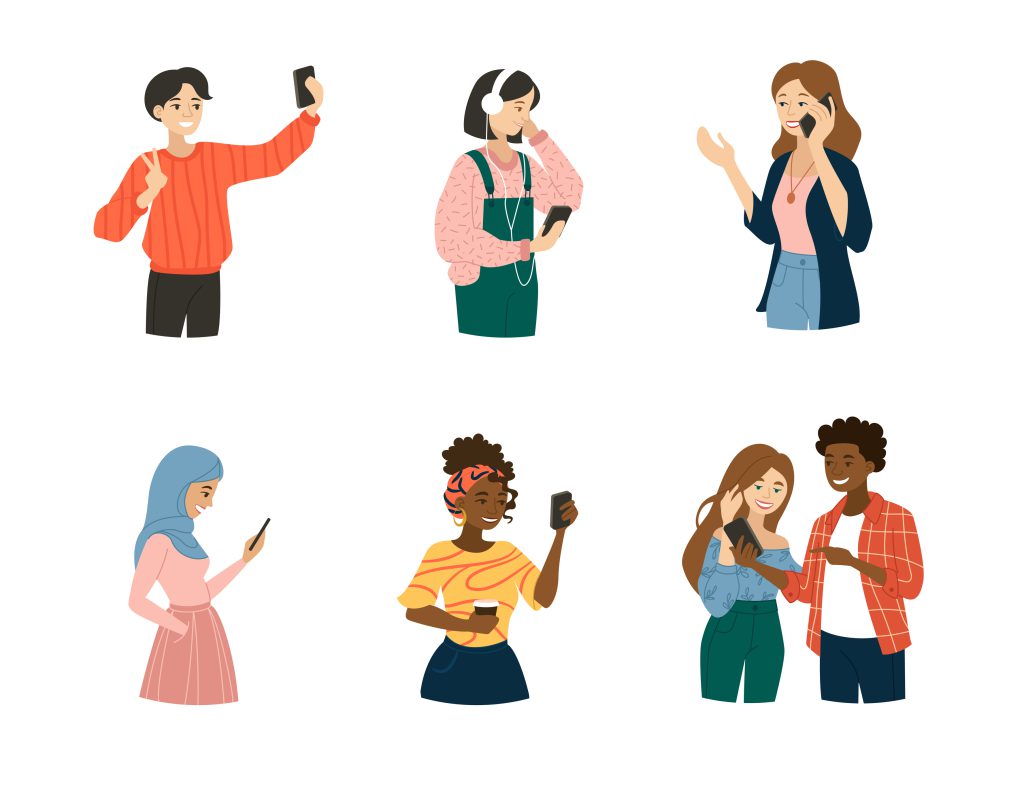We often hear people say that adolescence was one of the most tumultuous times of their lives, in both good and bad ways. In this blog, we explore some of the reasons why that might be.
The World Health Organization defines adolescence as the period between 10 and 19 years old (World Health Organization, 2022). However, organisations and professionals supporting the young now agree that adolescence extends to the mid-twenties (Sawyer et al., 2018). They argue that because young people continue their education for longer, get married, become financially independent, and have children later, adulthood is often delayed after 19 years old. There is also evidence that the brain continues to mature until the mid-twenties. Expanding the definition of adolescence is therefore important to make sure that policies, laws, and interventions reflect the fact that many people under 25 years old should still be considered adolescents.
Adolescence is one of the most unstable stages of human life due to the many physiological, cognitive, and emotional changes that happen during this period. These changes coincide with important life transitions, such as changes in friend groups, finishing secondary school, and entering the job market or higher education. On top of this, adolescents now face challenges that did not exist a few decades ago. For example, they must cope with the social pressure to create and maintain an online identity on social media, and many worry about worldwide issues like climate change. Although these transitions and challenges may be exciting and bring new opportunities for young people to develop a sense of self-identity and purpose, they can add a lot of stress too.
All of these factors may explain to an extent why adolescence is the period of onset for several mental health problems, and particularly anxiety and depression. Anxiety and depressive disorders are often diagnosed for the first time during that time, with the majority of anxiety cases (73%) and more than one in three (37%) depression cases emerging before the age of 25 (Solmi et al., 2022). Although it is unclear whether anxiety and depression rates are rising in the general population, research suggests that it may be the case in younger populations, especially teenage girls. Some papers suggest that emotional difficulties may have been exacerbated by challenges caused by the COVID-19 pandemic (Racine et al., 2021), such as being socially isolated from friends, having to learn remotely, or being cut from extracurricular activities like arts and sports. However, the increase in adolescent anxiety and depression had already been observed before 2020. Studies from 2019 show that 1 in 10 adolescents required clinical treatment due to suffering from severe anxiety and depressive symptoms (Lu 2019; Tiirikainen et al., 2019). This means that although the COVID-19 pandemic may have highlighted the increase in anxiety and depression for many young people, other reasons may explain why we were already seeing increases in anxiety and depression before the pandemic.
Researchers have been investigating the potential causes of this increase. Studies show that many factors contribute to anxiety and depression in young people, including individual-specific and familial factors such as biology, temperament, genetic vulnerability, and parental mental health. Additionally, environmental adversity such as trauma, stress, maltreatment, and bullying or rejection by peers have been identified as important risk factors. This suggests that the causes of this increase in emotional symptoms are probably complex and multifactorial, meaning that different factors may contribute to this problem.
One proposed reason that is specific to our era is the increasing presence of social media in adolescents’ lives. Although the use of social media enables adolescents to freely express their feelings and receive social support through online communities, researchers suggest that it may also have a negative impact on mental health (Keles et al., 2020). For example, a recent meta-analysis of 9 studies found an association between increase in social media use and higher depressive symptoms (Ivie et al., 2020). Research findings therefore suggest that social media use may be related to mental health in both positive and negative ways. However, this field of research is relatively new, and researchers insist that results must be interpreted cautiously. Although studies found significant links between social media use and both positive and negative mental health outcomes, it is unclear whether social media really causes mental health outcomes. Pre-existing mental health conditions could also predict social media use. For example, adolescents who suffer from emotional symptoms and struggle with social interactions may spend more time on social media. The reality is that social media use may be both a predictor and an outcome of mental health conditions, and more research is needed to clarify the direction of causation of this association. Despite these challenges, research shows that nurturing positive social relationships may be one way of increasing adolescents’ resilience in the face of adversity. Peer affiliations become increasingly valued as adolescents grow up and seek independence from their parents. A study conducted with British adolescents from lower socioeconomic background suggested that high quality and supportive friendships are associated with higher socioemotional wellbeing and resilience (Graber et al., 2016). The necessity for adolescents to foster healthy and supportive (and offline) relationships with peers, family, and mentors is therefore perhaps more important than ever.
Despite these challenges, research shows that nurturing positive social relationships may be one way of increasing adolescents’ resilience in the face of adversity. Peer affiliations become increasingly valued as adolescents grow up and seek independence from their parents. A study conducted with British adolescents from lower socioeconomic background suggested that high quality and supportive friendships are associated with higher socioemotional wellbeing and resilience (Graber et al., 2016). The necessity for adolescents to foster healthy and supportive (and offline) relationships with peers, family, and mentors is therefore perhaps more important than ever. 
References:
Keles, B., McCrae, N., & Grealish, A. (2020). A systematic review: the influence of social media on depression, anxiety and psychological distress in adolescents. International Journal of Adolescence and Youth, 25(1), 79-93. https://doi.org/10.1080/02673843.2019.1590851
Graber, R., Turner, R., & Madill, A. (2016). Best friends and better coping: Facilitating psychological resilience through boys’ and girls’ closest friendships. British Journal of Psychiatry, 107, 338-358. https://doi.org/10.1111/bjop.12135
Lu, W. Adolescent depression: National trends, risk factors, and healthcare disparities. American Journal of Health Behavior, 43(1), 181-194. https://doi.org/10.5993/AJHB.43.1.15
Racine, N., McArthur, B. A., Cooke, J. E., Eirich, R., Zhu, J., & Madigan, S. (2021). Global prevalence of depressive and anxiety symptoms in children and adolescents during COVID-19: A meta-analysis. JAMA Pediatrics, 175(11), 1142-1150. https://doi.org/10.1001/jamapediatrics.2021.2482
Sawyer, S. M., Azzopardi, P. S., Wickremarathne, D., & Patton, G. C. (2018). The age of adolescence. The Lancet Child & Adolescent Health, 2(3), 223-228. https://doi.org/10.1016/S2352-4642(18)30022-1
Solmi, M., Radua, J., Olivola, M., Croce, E., Soardo, L., Salazar de Pablo, G., Il Shin, J., Kirkbridge, J. B., Jones, P., Kim, J. H., Kim J. Y., Carvalho, A. F., Seeman, M. V., Correll, C. U., Fusar-Poli, P. (2022). Age at onset of mental disorders worldwide: Large-scale meta-analysis of 192 epidemiological studies. Molecular Psychiatry, 27(1), 281-295. https://doi.org/10.1038/s41380-021-01161-7
Tiirikainen, K., Haravuori, H., Ranta, K., Kaltiala-Heino, R., & Marttunen, M. (2019). Psychometric properties of the 7-item Generalized Anxiety Disorder Scale (GAD-7) in a large representative sample of Finnish adolescents. Psychiatry Research, 272, 30-35. https://doi.org/10.1016/j.psychres.2018.12.004
World Health Organization (2022, December 9). Adolescent health. https://www.who.int/health-topics/adolescent-health#tab=tab_1

